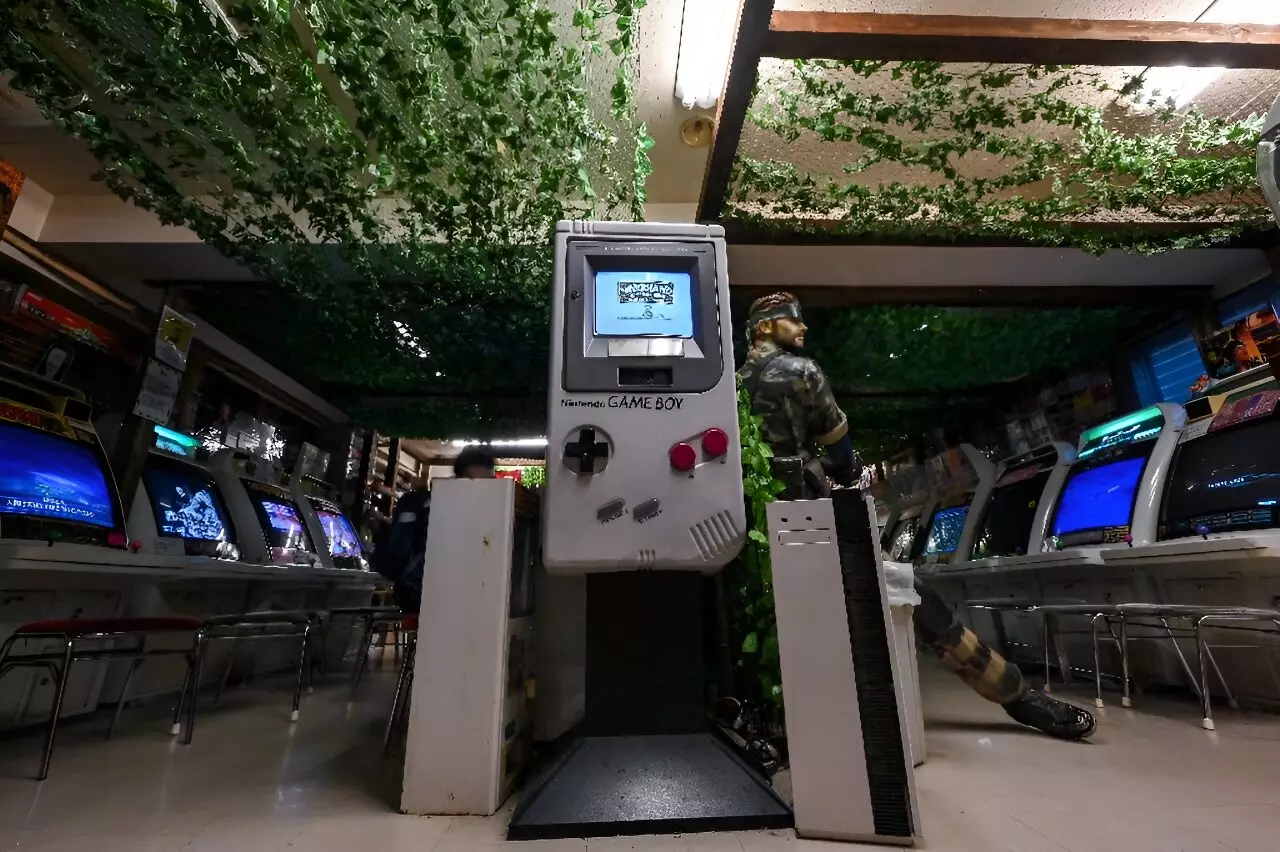Amidst the neon lights and bustling streets of Tokyo, a vibrant subculture is flourishing: the retro gaming scene. For many, including avid collector David Madrigal from the United States, visiting stores like Super Potato in Akihabara offers an exhilarating journey back to childhood. Once inside the vast emporium, Madrigal describes the atmosphere as akin to a child stepping into a fantasy realm where nostalgia reigns supreme. The tantalizing prospect of acquiring “vintage” consoles—like the discerningly sought-after PS Vita—often leads to excitement and wonder, especially since items that command high prices state-side seem to be available for a fraction of the cost in Japan.
As Madrigal illustrates, he secured a PS Vita for just $200, a bargain compared to the $600 he would typically pay back home. This disparity attracts a flood of international tourists, with 70-80% of Super Potato’s clientele being from abroad, eager to uncover gaming artifacts that represent a piece of their past.
The quest for retro gaming treasures draws in enthusiasts from across the globe, but the appeal extends far beyond mere affordability. Historically, vintage gaming consoles are not only bridges to the past but also vehicles of innovation that seem to have stagnated in today’s gaming landscape. Many contemporary games are criticized for lacking the daring design choices that characterized the titles of yesteryear. Madrigal reflects on this notion, pointing out that the era was marked by a unique thirst for creativity—developing games with distinct mechanics and compelling narratives often overshadowed by today’s cookie-cutter offerings.
Hiroyuki Maeda, a video game historian, deepens the understanding of this trend. He notes that collectors are often enticed by consoles that were uniquely marketed in Japan. Products like Nintendo’s Famicom and Super Famicom showcase design aesthetics that differ from their Western counterparts, thereby igniting a sense of mystery and urgency in foreign buyers. Maeda aptly states that encountering a novel console breeds a powerful compulsion in collectors, leading to noteworthy purchases that satisfy their yearning for gaming heritage.
Personal Narratives: Proudro’s Journey
Deep outside the urban sprawl, under the tranquility of rice and lotus fields, lies the treasure trove of an extraordinary collector known as Proudro. With a staggering collection containing thousands of vintage games and functioning arcade machines, he embodies the spirit of nostalgic devotion. Proudro’s admiration lies in the magic those games invoke—the sound of nostalgic melodies, the visuals of familiar gaming characters, and a revival of childhood memories spent in bustling game shops or friends’ living rooms. Interestingly, Proudro doesn’t play the games himself; rather, he finds contentment in merely being surrounded by them.
Proudro’s passion has led him to spend considerable resources building his collection over the years. While today’s vintage games can reach astronomical prices—like a wrapped “Super Mario Bros.” game fetching $2 million—such treasures were once considered near worthless. Games were often discarded or sold for meager prices, a stark contrast to the modern phenomenon of retro gaming reselling.
Reflecting on his early experiences, Proudro reminisces about the days when he could easily procure vintage games, often trading vegetables for collectibles in small, dusty towns. However, this accessibility has drastically diminished due to market shifts and the advent of the internet, which has streamlined the acquisition process but paradoxically made thrifting for real gems increasingly difficult. Now, the intimate connection seen in local shops has given way to online marketplaces, stripping away some of the charm.
Yet, despite the challenges, the thriving global interest in retro gaming excites Proudro. He founded an association dedicated to enthusiasts, hoping to foster a sense of community among players and collectors alike. Still, he expresses concern about the migration of Japanese gaming culture abroad. Proudro feels that while others may appreciate these relics, there’s an inherent value in keeping them within Japan’s borders, akin to the historical international journey of Japanese woodblock prints.
The Future of Retro Gaming
As the quest for retro gaming artifacts continues to gain momentum, the collaborative spirit among collectors and tourists enriches this niche hobby. It serves as a poignant reminder that while technology and gaming evolve, the love for the past remains timeless. Whether through the joy of discovery, the thrill of scrupulous collecting, or the celebration of heritage, retro gaming represents a portal to a simpler, more adventurous era in the realm of entertainment—one where the spirit of innovation and creativity endeavored to make history alive and meaningful for generations to come.


Leave a Reply